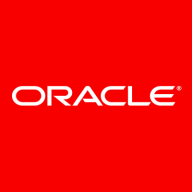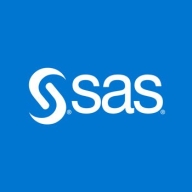

Oracle Data Integrator and SAS Data Management compete in the data integration and management category. Oracle Data Integrator seems to have an advantage with its ELT capabilities and flexible integration, while SAS Data Management provides a comprehensive suite more suited for data quality and accessibility.
Features: Oracle Data Integrator delivers extensive ELT capabilities, enhances performance by leveraging source and target technologies, and supports multiple scripting languages, enabling diverse platform integration. SAS Data Management supports robust import/export functionalities, ensures data quality and provides an accessible interface for non-technical users.
Room for Improvement: Oracle Data Integrator could enhance its graphical interface, improve error handling, and simplify multi-user development. SAS Data Management needs better cloud integration, improved inter-tool compatibility, and more automation features.
Ease of Deployment and Customer Service: Both Oracle Data Integrator and SAS Data Management are primarily on-premises solutions. Oracle accommodates public and hybrid cloud configurations but has inconsistent customer service. SAS offers stable support with quick problem resolution.
Pricing and ROI: Oracle Data Integrator is viewed as expensive, with high licensing costs, but provides value through automation and efficiency. SAS Data Management, while also costly, offers a robust feature set beneficial for larger enterprises. Both solutions deliver ROI with efficient implementation, though high initial costs may deter smaller users.
The technical support of Oracle is very good; they support the Oracle Data Integrator (ODI) solution effectively.
I can get solutions quickly, and any tickets I submit to Oracle are responded to and resolved rapidly.
The support for SAS in Brazil is not the best one, but the support in Sweden is really good, as they visit the company and work to solve the issues.
The scalability and the ability to handle multiple workloads of several parallel ETL jobs could use improvement.
In terms of performance stability, I have not experienced any downtimes, crashes, or performance issues with the Oracle Data Integrator (ODI).
Integrating AI with ODI that provides recommendations on how to fix those data quality issues after analyzing and profiling business data would be excellent.
If I use a source system like Oracle and a target system like Teradata, ODI will still run, but it struggles a bit with different infrastructures.
There is significant room for improvement, especially with regard to using a hybrid approach that involves both CAS and persistent storage.
The pricing aspect of Oracle Data Integrator (ODI) is reasonable; it brings significant value to the table.
ODI is cheaper compared to Informatica PowerCenter and IBM DataStage.
From my experience, SAS Data Management is an expensive tool.
The main benefits that Oracle Data Integrator (ODI) brings to the table include data quality, data completeness functionality, metadata management, and the reverse engineering feature, which allows integrating the metadata of diversified data sources with a single click.
Oracle Data Integrator (ODI) is powerful and strong if my system uses Oracle components for environments like OLTP, enterprise data warehouse, or data marts.
SAS Data Management stands out because of its data standardization, transformation, and verification capabilities.
The best features I appreciate about SAS Data Management tool are that it's easy to create the flows and schedule data, and the tables are not too big, making it easy to control the ETL process, including user access which is also easy to manage in SAS.
| Product | Market Share (%) |
|---|---|
| Oracle Data Integrator (ODI) | 2.4% |
| SAS Data Management | 1.0% |
| Other | 96.6% |

| Company Size | Count |
|---|---|
| Small Business | 25 |
| Midsize Enterprise | 12 |
| Large Enterprise | 43 |
| Company Size | Count |
|---|---|
| Small Business | 7 |
| Midsize Enterprise | 1 |
| Large Enterprise | 8 |
Oracle Data Integrator (ODI) is a data integration software solution that provides a unified infrastructure to streamline data and application integration projects. It uses a powerful design approach to data integration, which separates the declarative rules from the implementation details. The solution is based on a unique ELT (Extract Load Transform) architecture, eliminating the need for a standalone ETL server and proprietary engine.
Oracle Data Integrator Features
ODI has many valuable key features. Some of the most useful ones include:
Oracle Data Integrator Benefits
There are many benefits to implementing ODI. Some of the biggest advantages the solution offers include:
Reviews from Real Users
Below are some reviews and helpful feedback written by PeerSpot users currently using the Oracle Data Integrator (ODI) solution.
Brian D., Business Process and Strategy Specialist Advisor at NTTData, says, “The Knowledge Module (KM) is my favorite feature of ODI. This is where I learned how to use variables to make jobs dynamic. I took that knowledge and created a KM that would go into iTunes and pull the sales of eBooks. Making something that is reusable, like a KM, is important to not only reduce build time but also maintenance in the future.”
Ashok S., Applications Support Manager at a marketing services firm, mentions, "The most valuable features of ODI are the ease of development, you can have a template, and you can onboard transfer very quickly. There's a lot of knowledge modules available that we can use. If you want to connect, for example, a Sibyl, SQL, Oracle, or different products, we don't have to develop them from scratch. They are available, but if it's not, we can go into the marketplace and see if there's a connector there. Having the connector available reduces the amount of hard work needed. We only have to put the inputs and outputs. In some of the products, we use there is already integration available for ODI, which is helpful."
Every decision, every business move, every successful customer interaction - they all come down to high-quality, well-integrated data. If you don't have it, you don't win. SAS Data Management is an industry-leading solution built on a data quality platform that helps you improve, integrate and govern your data.
We monitor all Data Integration reviews to prevent fraudulent reviews and keep review quality high. We do not post reviews by company employees or direct competitors. We validate each review for authenticity via cross-reference with LinkedIn, and personal follow-up with the reviewer when necessary.